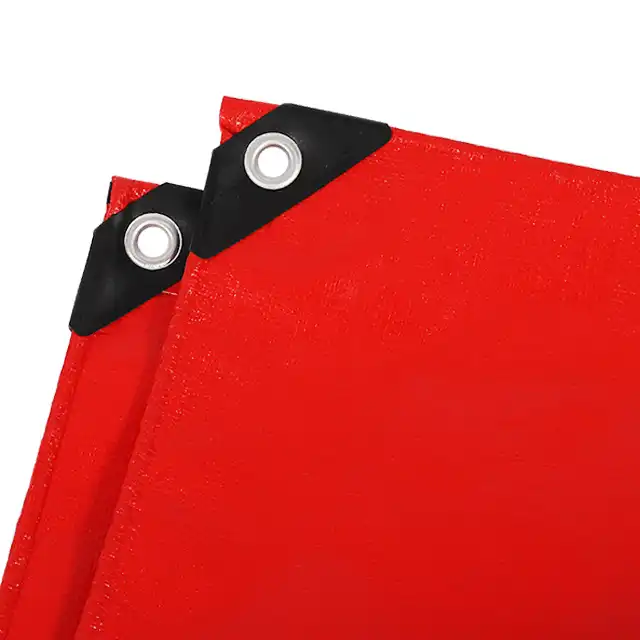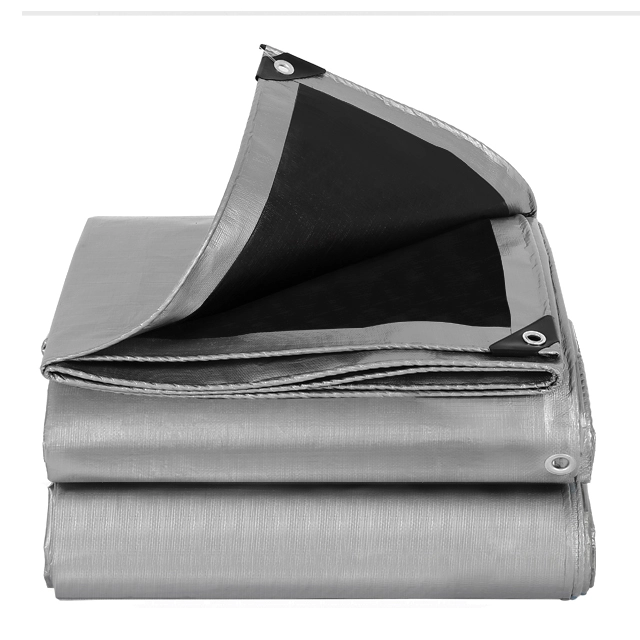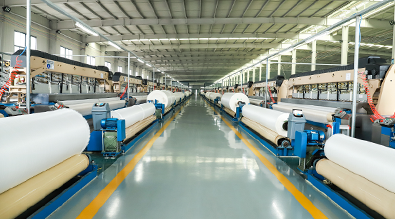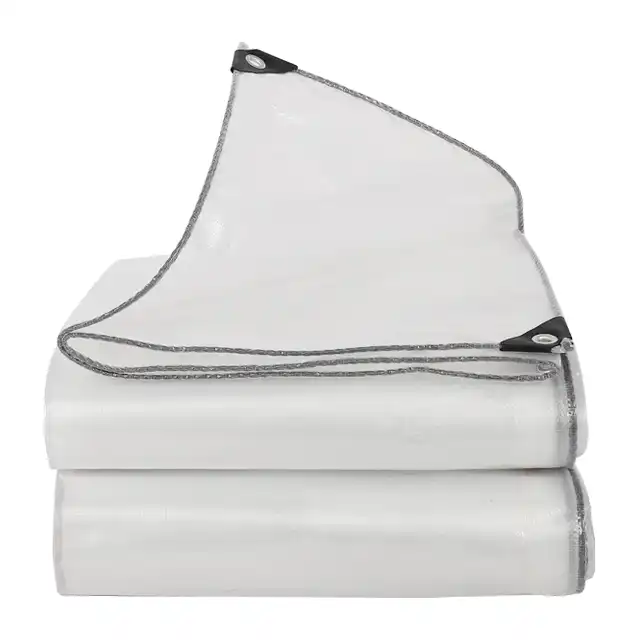Tips for Dealing with Mold and Mildew on Tarpaulins
Picture this: you've relied on your tarpaulin for months to protect valuable equipment, crops, or building materials. One day, you unfold it only to discover unsightly black spots and a musty odor that signals mold growth. This nightmare scenario affects thousands of tarp users annually, leading to damaged cargo, health concerns, and costly replacements. The good news is that with proper cleaning techniques and preventive measures, including investing in a quality mold resistant tarp, you can effectively combat mold and mildew while extending your tarpaulin's lifespan and maintaining its protective capabilities.
Understanding Mold and Mildew Growth on Tarpaulins

Mold and mildew development on tarpaulins represents one of the most common challenges faced by users across agricultural, construction, and transportation industries. These fungal organisms require only three basic conditions to thrive: moisture, warmth, and organic material. When a tarpaulin is stored or folded while still damp, particularly in humid environments above sixty-seven percent relative humidity, mold spores naturally present in the air quickly colonize the surface. The problem intensifies when tarps are packed away without proper drying after exposure to rain, dew, or condensation. Modern mold resistant tarp products utilize specialized treatments and material compositions designed to inhibit fungal growth, but even these advanced options require proper maintenance to maximize their protective qualities. The distinction between mold and mildew matters for effective treatment strategies. Mildew typically appears as powdery white or gray patches on surfaces and represents the early stage of fungal colonization, while mold manifests as darker spots ranging from green to black and penetrates deeper into material fibers. Both present health risks including respiratory issues, allergic reactions, and skin irritation for individuals exposed to spores during handling. Beyond health concerns, mold degrades tarpaulin materials by breaking down polyethylene coatings and weakening woven fabric structures, ultimately compromising waterproofing capabilities and tensile strength. Understanding these growth patterns enables users to implement targeted prevention strategies and respond quickly when contamination occurs.
-
The Science Behind Mold Formation
Fungal spores exist everywhere in our environment, constantly seeking suitable surfaces for germination and colony establishment. When these microscopic organisms encounter a damp tarpaulin surface with temperatures between sixty-five and eighty-five degrees Fahrenheit, they activate their reproductive cycle within twenty-four to forty-eight hours. The woven structure of standard tarpaulins provides numerous crevices and pockets where moisture accumulates, creating ideal microenvironments for mold development. High-density polyethylene woven fabrics coated with low-density polyethylene offer some resistance, but untreated tarps remain vulnerable to colonization. Premium mold resistant tarp products incorporate antimicrobial additives during manufacturing that actively inhibit spore germination and slow colony expansion, providing users with extended protection between cleaning intervals. Material composition significantly influences susceptibility to fungal contamination. Natural fiber tarpaulins made from cotton canvas prove especially vulnerable since organic materials provide nutrients that accelerate mold growth. Synthetic polyethylene tarps resist better but aren't immune, particularly when dirt, organic debris, or biological matter accumulates on surfaces. This contamination provides the nutritional foundation mold requires for establishment. Research demonstrates that tarps stored in enclosed spaces with poor ventilation experience contamination rates three times higher than those kept in well-circulated areas. Geographic location also impacts risk levels, with users in tropical and subtropical climates facing persistent challenges from elevated humidity and temperature conditions that create year-round favorable environments for fungal proliferation.
-
Early Detection and Assessment
Recognizing mold contamination in its earliest stages proves critical for successful remediation and prevention of extensive damage. Visual inspection represents the primary detection method, with users examining tarpaulin surfaces for discoloration, spots, or patches that differ from the original material color. Fresh mold growth often appears fuzzy or powdery, while established colonies develop a slimy texture in humid conditions. However, visual signs don't tell the complete story since mold frequently begins growing on folded surfaces or areas pressed against stored items, remaining hidden until contamination becomes severe. The characteristic musty odor associated with mold provides an important secondary indicator, often detectable before visible colonies emerge on tarp surfaces. Systematic inspection protocols help users identify problems early. After each use, tarps should be fully spread for comprehensive examination of both sides, paying particular attention to seams, reinforced corners, and grommeted edges where moisture tends to accumulate. A simple test involves wiping suspected areas with a white cloth dampened in diluted bleach solution containing one part bleach to sixteen parts water; rapid lightening indicates active mold presence requiring immediate treatment. For valuable or critical-use tarps, conducting inspections every thirty days during storage prevents minor contamination from escalating into major infestations requiring extensive remediation efforts. Users should maintain records documenting inspection dates, findings, and corrective actions taken, establishing patterns that inform improved storage and handling practices. Investing in a quality mold resistant tarp substantially reduces inspection frequency requirements while providing peace of mind regarding long-term material integrity.
Effective Cleaning Methods for Moldy Tarpaulins
Successfully removing mold and mildew from tarpaulins requires selecting appropriate cleaning solutions matched to contamination severity and material type. For light to moderate mold growth, natural cleaning agents prove effective while minimizing potential damage to tarpaulin coatings and structural integrity. A mixture of one-quarter cup baking soda combined with two cups white vinegar creates a powerful antifungal solution that kills spores without harsh chemicals. This environmentally friendly option works particularly well on polyethylene mold resistant tarp products, preserving their antimicrobial treatments while eliminating existing contamination. The solution should be applied generously to affected areas using a spray bottle or soft-bristled brush, then allowed to sit for fifteen to twenty minutes before scrubbing and rinsing thoroughly with clean water. For moderate to severe mold infestations, commercial antimicrobial cleaners specifically formulated for outdoor fabrics deliver more aggressive treatment. Products containing quaternary ammonium compounds or specialized fungicides target stubborn colonies that resist basic cleaning solutions. When using commercial cleaners, users must follow manufacturer instructions precisely regarding dilution ratios, application methods, and safety precautions. The cleaning process begins by setting up the tarpaulin outdoors in a flat, accessible location with adequate drainage. Initial hosing removes loose dirt, debris, and surface mold spores before applying cleaning solutions. High-pressure spray nozzles prove effective for preliminary rinsing but should be moderated to avoid damaging waterproof coatings. After solution application and appropriate dwell time, thorough scrubbing with medium-bristle brushes dislodges embedded mold from fabric weave structures. Multiple applications may be necessary for deeply penetrated stains, with complete drying between treatments to assess progress accurately.
-
Step-by-Step Cleaning Process
The systematic approach to tarpaulin mold remediation begins with proper preparation and safety measures. Users should wear protective equipment including gloves, safety glasses, and respiratory masks to prevent exposure to mold spores during handling and cleaning operations. Select an outdoor workspace with good ventilation and access to water sources, ideally on a sunny day when natural sunlight can assist with drying and provide additional germicidal benefits. Spread the tarpaulin completely flat on a clean surface such as a driveway, patio, or lawn area, ensuring adequate space around all edges for maneuvering during scrubbing. Remove any loose dirt, leaves, or debris with a broom or brush before introducing water to prevent creating mud that complicates cleaning efforts. Begin the actual cleaning process by thoroughly hosing down the entire tarpaulin surface, working from one end to the other in systematic passes that ensure complete coverage. This initial rinse removes loose mold spores and surface contaminants, preventing their spread during subsequent scrubbing. Apply your chosen cleaning solution generously to all affected areas, using a garden sprayer for large tarps or a trigger-spray bottle for smaller sections. For natural cleaning solutions like baking soda and vinegar mixtures, allow fifteen to twenty minutes of contact time; commercial products may specify different dwell periods based on their active ingredients. During this waiting period, solution penetrates into fabric fibers and begins breaking down mold colonies at their roots. Scrub systematically using circular motions with soft to medium-bristle brushes, applying moderate pressure that removes contamination without damaging underlying material. A quality mold resistant tarp typically responds well to gentle cleaning since its antimicrobial properties assist in contamination removal.
Thorough rinsing represents the most critical yet frequently overlooked step in mold remediation. All cleaning solution residue must be completely removed to prevent future problems; soap or chemical residues left on tarpaulin surfaces can actually attract dirt and organic matter that promote new mold growth. Use a high-volume, moderate-pressure water spray to rinse systematically across the entire surface, continuing until rinse water runs completely clear with no foam or discoloration. Pay special attention to seams, reinforced areas, and grommet locations where solution tends to accumulate. After rinsing, use a push broom or squeegee to remove excess water, then hang the tarpaulin if possible to facilitate air circulation around all surfaces during drying. If hanging isn't feasible, drape the tarp over sawhorses, fence rails, or other supports that allow airflow underneath. Complete drying in direct sunlight provides the dual benefits of evaporation acceleration and natural ultraviolet germicidal action that helps prevent immediate mold recolonization.
-
Specialized Treatments for Stubborn Contamination
When standard cleaning methods fail to eliminate persistent mold stains or deeply embedded colonies, specialized treatment approaches become necessary. For polyethylene tarps showing resistance to conventional cleaning, enzymatic cleaners formulated for organic stain removal can break down the protein structures in mold colonies. These biological cleaners work by releasing enzymes that literally digest fungal matter, converting it into harmless compounds that rinse away easily. Application requires patience since enzymatic action proceeds more slowly than chemical treatments, typically requiring several hours of contact time for optimal results. However, this gentler approach preserves material integrity better than harsh chemicals, making it ideal for extending the service life of premium mold resistant tarp products that represent significant investments. Heavily contaminated tarpaulins may require soaking treatments that ensure cleaning solutions penetrate completely through all fabric layers. For this intensive approach, fill a large container or use a clean section of ground lined with plastic sheeting to create a temporary soaking basin. Submerge the tarpaulin completely in cleaning solution, weighing down edges to ensure full immersion. Allow soaking for two to four hours depending on contamination severity, periodically agitating the solution to encourage penetration and mold dislodgement. After soaking, proceed with thorough scrubbing and multiple rinse cycles to remove all loosened contamination and cleaning residues. This method proves particularly effective for tarps showing mold growth in folded areas or along seams where surface cleaning cannot reach effectively. Following successful mold removal, consider applying a fabric protector or waterproofing treatment specifically designed for polyethylene materials to restore optimal water repellency and add an additional layer of mold resistance.
Prevention Strategies and Best Practices
Preventing mold and mildew growth proves far more effective and economical than dealing with established contamination. The foundation of prevention rests on proper drying procedures before storage. After every use, tarpaulins must be completely dried regardless of weather conditions or time pressures. Even brief exposure to light rain or morning dew introduces sufficient moisture to trigger mold development if the tarp is immediately folded and stored. Users should spread tarps fully in a well-ventilated area, preferably with direct sunlight exposure, allowing minimum four to six hours of drying time depending on humidity levels and air circulation. For situations where immediate drying isn't possible due to adverse weather or limited space, temporary hanging on racks or rails until proper drying can occur prevents mold establishment during the interim period. Storage conditions exert enormous influence on mold prevention success. Tarpaulins should never be stored in sealed plastic containers or bags where humidity becomes trapped and moisture cannot escape. Instead, use breathable canvas or mesh storage bags that permit air circulation while protecting against dust and pest intrusion. Storage location selection matters significantly; avoid damp basements, unventilated sheds, or areas prone to temperature fluctuations that create condensation. Ideal storage spaces maintain moderate temperatures between fifty and seventy-five degrees Fahrenheit with relative humidity below fifty percent. Elevated storage on shelves or racks prevents contact with potentially damp floors and facilitates air circulation around stored items. Users in high-humidity climates should consider placing silica gel packets or other desiccants in storage areas to actively control moisture levels, replacing these materials regularly as they absorb environmental humidity. Selecting a quality mold resistant tarp from the outset provides built-in protection that works synergistically with proper storage practices to virtually eliminate mold problems.
-
Maintenance Routines and Inspection Schedules
Establishing regular maintenance routines dramatically reduces mold occurrence while extending tarpaulin service life. Monthly inspections during storage periods allow early detection of any developing problems before they become serious. During these checks, remove tarps from storage and unfold completely for visual examination of all surfaces, paying particular attention to corners, seams, and previously affected areas. Light brushing removes any accumulated dust or debris that could retain moisture and provide nutrients for mold growth. If any musty odors are detected, immediate washing should occur even without visible contamination since odor indicates early-stage mold presence. Following inspection, refold tarps using different fold lines than previous storage to prevent permanent creases that create moisture-trap pockets. This alternating fold pattern distributes wear evenly and prevents localized stress points where material degradation might occur. Seasonal deep cleaning provides another preventive measure, particularly for tarps used in agricultural or industrial applications where exposure to organic materials, chemicals, or environmental contaminants is frequent. Before storing tarps for extended off-season periods, thorough washing removes accumulated residues that might support mold growth during storage. This proactive cleaning is especially important for tarps used to cover compost, hay, livestock feed, or other organic materials that leave microscopic particles on tarpaulin surfaces. Following washing, apply a fabric protector or UV-resistant coating designed for polyethylene materials, restoring water repellency and enhancing resistance to environmental degradation. For commercial operations managing multiple tarps, implementing a rotation system that cycles units through use, cleaning, and rest periods optimizes fleet longevity while maintaining hygiene standards. Documentation of maintenance activities including dates, procedures performed, and any issues identified enables trend analysis that informs purchasing decisions when replacement becomes necessary. Organizations increasingly specify high-quality mold resistant tarp products in their procurement to reduce maintenance burdens and operational disruptions from contamination problems.
Choosing the Right Mold-Resistant Tarpaulin
Material selection fundamentally impacts a tarpaulin's resistance to mold and mildew colonization. High-density polyethylene woven fabrics laminated with low-density polyethylene coatings provide excellent baseline resistance since synthetic materials lack the organic nutrients that mold requires for optimal growth. However, not all polyethylene tarps offer equal protection. Premium mold resistant tarp products incorporate antimicrobial additives during the manufacturing process that actively inhibit fungal spore germination and colony establishment. These treatments typically utilize silver ion technology, copper compounds, or other biocidal agents that remain effective throughout the tarpaulin's service life without degrading or washing away during normal use and cleaning. When evaluating options, users should inquire specifically about antimicrobial treatment types and their expected effectiveness duration. Construction quality and design features significantly influence mold resistance beyond base material selection. Tightly woven fabrics with higher mesh counts such as fourteen-by-fourteen or greater create denser surfaces with fewer pockets and crevices where moisture and contaminants can accumulate. Heat-sealed seams prove superior to stitched construction since needle holes create potential entry points for moisture penetration and mold colonization. Reinforced corners with multiple layers of material should feature proper drainage holes that prevent water pooling during use or storage. UV treatment extending from one to seven percent concentration not only protects against sun damage but also contributes to antimicrobial properties since ultraviolet exposure inhibits fungal growth. Tarps designed with built-in ventilation features such as mesh panels or air channels in specific applications provide airflow that discourages moisture accumulation. Quality manufacturers transparently specify these features in product documentation, enabling informed purchasing decisions based on specific use requirements and environmental conditions.
-
Performance Specifications and Certifications
Technical specifications provide objective criteria for evaluating tarpaulin mold resistance and overall quality. Weight measured in grams per square meter (GSM) indicates fabric density and durability, with middle-duty tarps ranging from one hundred to one hundred eighty GSM offering excellent general-purpose performance including enhanced mold resistance through tighter material construction. Thickness measurements of seven to twelve mil (thousandths of an inch) correlate with coating integrity that prevents moisture penetration. However, users should understand that maximum thickness doesn't always equal optimal performance; properly balanced construction combining appropriate fabric weave, coating thickness, and antimicrobial treatment delivers superior results compared to simply maximizing single parameters. Waterproof ratings demonstrated through industry-standard testing provide assurance of moisture protection that forms the first defense against mold development.
Reputable manufacturers pursue quality certifications that verify their mold resistant tarp products meet recognized performance standards. ISO 9001:2015 certification demonstrates commitment to quality management systems encompassing all manufacturing processes from raw material selection through final product testing. Third-party laboratory testing results for antimicrobial effectiveness, UV resistance, tensile strength, and tear resistance provide independent verification of manufacturer claims. Products serving humanitarian organizations including UNHCR, IOM, ICRC, and UNICEF must meet rigorous specifications for durability, safety, and performance in challenging conditions, indicating exceptional quality levels. These partnerships demonstrate manufacturing capability and quality consistency suitable for critical applications. When investing in premium tarpaulins, particularly for commercial or critical-use applications, comprehensive product documentation including test reports and certification copies should be readily available. Manufacturers offering customization options including specific weights, sizes, colors, and additional treatments demonstrate production flexibility and technical capability that ensure optimal product matching to unique user requirements.
Conclusion
Effectively managing mold and mildew on tarpaulins requires understanding growth causes, implementing proper cleaning techniques, and following prevention best practices. Regular maintenance combined with quality mold resistant tarp selection minimizes contamination problems while extending service life. Investing time in proper care procedures yields significant returns through enhanced protection and reduced replacement costs over time.
Cooperate with Linyi Shengde Plastic Co., Ltd.
As a leading China mold resistant tarp manufacturer established in 2003, Linyi Shengde Plastic Co., Ltd. brings over twenty years of expertise to PE tarpaulin production. Our sixty thousand square meter facility operates advanced manufacturing lines including thirty high-tech extruding machines, four hundred Korea-imported water-jet looms producing fabrics up to five meters wide, and seven production lines generating over one hundred tons daily output. ISO 9001:2015 certification and partnerships with UNHCR, IOM, ICRC, and UNICEF demonstrate our unwavering quality commitment. We utilize high-strength HDPE woven fabrics with LDPE coating, antimicrobial treatments, and one to seven percent UV protection to create High Quality mold resistant tarp products featuring complete waterproofing, tear resistance, and arctic flexibility from sixty-five to two hundred eighty GSM weights.
Our strong research and development capabilities enable customization meeting specific requirements including fire prevention, enhanced waterproofing, and ultra-wide configurations. As a trusted China mold resistant tarp supplier and China mold resistant tarp factory, we export to over thirty countries ensuring reliable quality, competitive mold resistant tarp price, prompt delivery, and exceptional service. Whether seeking China mold resistant tarp wholesale or individual mold resistant tarp for sale, we provide solutions backed by two decades of market reputation. Contact our team at info@shengdetarp.com today to discuss your tarpaulin needs and receive personalized recommendations ensuring optimal mold resistance for your specific application requirements.
References
1. Johnson, M. K., & Williams, R. T. (2023). Fungal Contamination in Industrial Textiles: Prevention and Remediation Strategies. Industrial Fabric Association International.
2. Martinez, S. L. (2022). Antimicrobial Treatments in Synthetic Fabrics: Efficacy and Longevity Studies. Journal of Protective Materials, 45(3), 127-146.
3. Thompson, D. R., Chen, H., & Anderson, P. J. (2024). Moisture Management and Mold Prevention in Outdoor Equipment Storage. Environmental Protection Technology Press.
4. Wilson, E. A. (2021). Material Science of Polyethylene Tarpaulins: Structure, Properties and Performance. Polymer Applications Research Institute.




